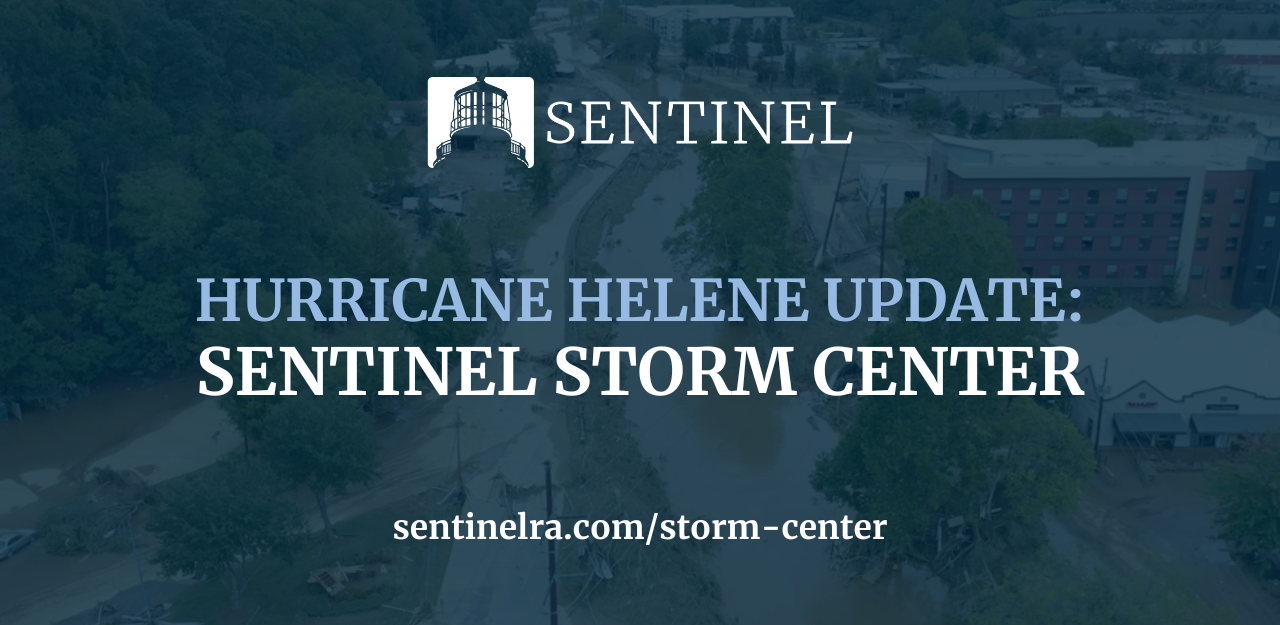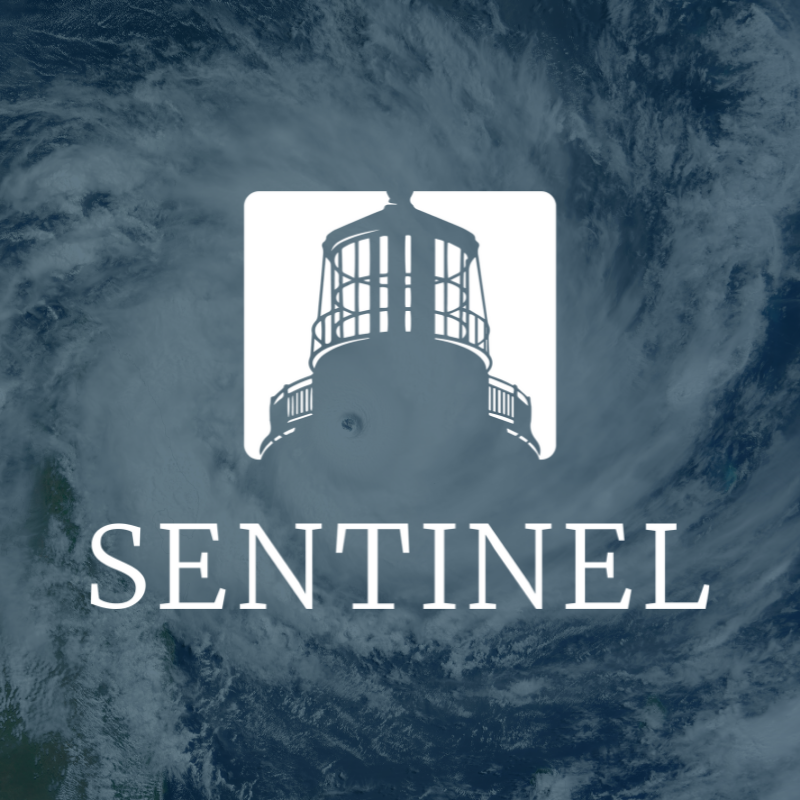We at Sentinel are deeply saddened by the damage across the entire Southeast following Hurricane Helene’s path. The 2024 storm season has already proven to be hugely impactful, and unfortunately, it looks like we are far from the finish line this year.
The western portions of the Carolinas received an extremely rare flooding event that will likely become the largest in history, rivaling the prior record-holding Great Flood of 1916 which killed dozens of people and resulted in more than $500,000,000 in damages in today’s dollars. It will likely be months before a total loss amount is confirmed following Friday’s overwhelming destruction, but based on current media coverage, we cannot fathom this event will be any less.
As of Monday, September 30, the death toll has exceeded 100 and will likely continue to rise, making it the third highest count in the last 50 years. The loss of lives, homes, historic properties, businesses, and complete districts is heart-wrenching, and will impact our families, clients, and friends for years to come.
Flood Exclusions
Unfortunately, due to the geographical areas where the brunt of damage occurred, there is likely a potential for a major gap in what will be covered by insurance. Flood is a named exclusion in most Homeowner and Commercial Property coverages, and often must be purchased in a separate flood policy. Flood is most often defined as
- “A general and temporary condition of partial or complete inundation of two or more acres of normally dry land area or of two or more properties (one of which is your property) from: a. Overflow of inland or tidal waters; b. Unusual and rapid accumulation or runoff of surface waters from any source; c. Mudflow.*
- Collapse or subsidence of land along the shore of a lake or similar body of water as a result of erosion or undermining caused by waves or currents of water exceeding anticipated cyclical levels that result in a flood as defined above.”
*Mudflow is defined as, “A river of liquid and flowing mud on the surface of normally dry land areas, as when earth is carried by a current of water. Other earth movements, such as landslide, slope failure or a saturated soil mass moving by liquidity down a slope, are not mudflows.”
There is a chance that many will find themselves in a scenario where they do not have an incoming settlement check from their carrier to assist with the mitigation and repairs from flood damage. This is going to be financially cumbersome for many, and as such, it is important to know that there are some additional non-insurance resources that may be available to assist those who need it most.
If you do have flood coverage, a claim should be filed promptly. Contact your insurance representative to begin the path to recovery. Fillable forms can be found at fema.gov/flood-insurance/find-form/policyholders.
Recovery Resources
FEMA, or the Federal Emergency Management Agency, has established Helene’s footprint in North Carolina as DR-4827-NC and has established a webpage dedicated to resources and help. This site, fema.gov/disaster/4827, will take you straight to local resources, designated areas for shelter and assistance, and a link to apply for assistance. It is important to note that if you do carry insurance that may potentially cover your loss that you first file the claim with your carrier, as FEMA cannot assist with losses covered by insurance.
The Red Cross has also established a webpage specific to Helene, which can be found at redcross.org/about-us/news-and-events/press-release/2024/red-cross-responds-to-hurricane-helene. This page provides resources for shelter, locating loved ones and application for financial assistance. There is also information on helping, donating, and volunteering to assist.
While so many of the effects from this storm will be physical, this can also be difficult emotionally. As such, the federal government has established the Disaster Distress Helpline. Information on this free service can be found at samhsa.gov/find-help/disaster-distress-helpline and a trained counselor can be reached by phone call or text at 800-985-5990.
Do not delay clean up after a flood. If you are allowed back to your property, separate damaged property from undamaged property. Move non-salvageable building materials and personal property to avoid worsening damage and mold. Do not discard anything before reviewed by your adjuster unless the damaged item presents a health hazard, or you are required to discard by local law. If you must discard the property, take photographs documenting damage and keep samples of building materials for the adjuster to review.
It is important to know who to trust during clean-up. Expect assistance from Government Officials, Insurance Adjusters, Contractors, and Non-profit or Volunteer organizations. Stay alert for potential fraud. Reputable sources will not require payment, your Social Security Number or Banking information. Be leery of anyone who utilizes pressure tactics to sign consent forms with payment in advance.
Safeguarding Your Success
All Sentinel clients have access to our highly skilled in-house Claims Team, who is standing by and ready to assist. Sentinel’s storm line can be reached at 919-719-5636. This line is staffed 24 hours a day, 7 days a week to ensure you reach an experienced team member as quickly as possible. Additional resources can be found at sentinelra.com/storm-center including claims reporting forms, hurricane preparation and recovery insight, and information regarding flood insurance options for any future events. Sentinel is here to help you weather the storm.


